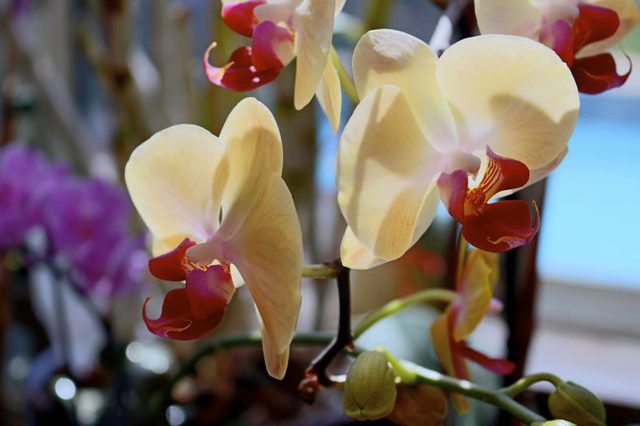Bulbs
Flower Basics
Flower Beds & Specialty Gardens
Flower Garden
Garden Furniture
Garden Gnomes
Garden Seeds
Garden Sheds
Garden Statues
Garden Tools & Supplies
Gardening Basics
Green & Organic
Groundcovers & Vines
Growing Annuals
Growing Basil
Growing Beans
Growing Berries
Growing Blueberries
Growing Cactus
Growing Corn
Growing Cotton
Growing Edibles
Growing Flowers
Growing Garlic
Growing Grapes
Growing Grass
Growing Herbs
Growing Jasmine
Growing Mint
Growing Mushrooms
Orchids
Growing Peanuts
Growing Perennials
Growing Plants
Growing Rosemary
Growing Roses
Growing Strawberries
Growing Sunflowers
Growing Thyme
Growing Tomatoes
Growing Tulips
Growing Vegetables
Herb Basics
Herb Garden
Indoor Growing
Landscaping Basics
Landscaping Patios
Landscaping Plants
Landscaping Shrubs
Landscaping Trees
Landscaping Walks & Pathways
Lawn Basics
Lawn Maintenance
Lawn Mowers
Lawn Ornaments
Lawn Planting
Lawn Tools
Outdoor Growing
Overall Landscape Planning
Pests, Weeds & Problems
Plant Basics
Rock Garden
Rose Garden
Shrubs
Soil
Specialty Gardens
Trees
Vegetable Garden
Yard Maintenance
How to Kill Mites From an Orchid
How to Kill Mites From an Orchid. Despite their reputations of being the fussy divas of the plant world, orchids, members of the *Orchidaceae* plant family, are generally easy-to-grow and trouble-free. However, they can attract several pests, including various spider mite and false mite species. Mites reproduce quickly when it's dry, warm and...

Despite their reputations of being the fussy divas of the plant world, orchids, members of the Orchidaceae plant family, are generally easy-to-grow and trouble-free. However, they can attract several pests, including various spider mite and false mite species. Mites reproduce quickly when it's dry, warm and dusty, often becoming an infestation before you even notice a problem. Most commercial insecticides don't work on mites -- with the pests being arachnids and all -- and effective miticides aren't readily available to homeowners. Fortunately, several low-toxicity options are available that can help you kill orchid mites.
Wash Mites Off
Regularly rinsing orchid leaves with a forceful spray of water helps reduce mite populations. This process, known as syringing, also gets rid of spider mites' protective webbing, raises humidity levels and addresses the dusty, dry conditions that often promote the growth of mite populations. Move your plants into a sink, bathtub or shower and use the shower head or sink sprayer to thoroughly rinse the foliage with a strong stream of water. Make sure you spray the undersides of leaves, where mites tend to congregate.
Spray Alcohol Solutions
The American Orchid Society recommends using a simple, homemade alcohol and cleaner solution for treating mite infestations. For this mixture, you'll need a household cleaner with the active ingredient alkyl, an ammonium compound. Combine 1 pint of the cleaner with 1 pint of isopropyl alcohol and add enough water to make 1 gallon of solution. Use a small spray bottle to thoroughly coat all foliage, including the base of the plant as well as the tops and undersides of leaves. Spray nearby plants as well, because the mites might decide to evacuate to adjacent foliage. This solution won't affect mite eggs at all, so spray orchids every three or four days, providing six to eight treatments to ensure you kill all of the newly hatched mites.
Before spraying the solution on your plants, experts from the South Florida Orchid Society, Inc. suggest first wiping off infested foliage with a soft rag dipped in soapy water. This makes your job easier by killing some of the pests and getting rid of the protective webbing that can prevent the spray from reaching the mites.
Apply Neem Oil
Neem oil kills mites by smothering them, but won't harm people, pets or the environment. Some neem oil products come in ready-to-use bottles that make the application process fast and easy. Simply shake the bottle and spray the foliage until the solution drips from the leaves. Because oil only affects mites with which it makes direct contact, you must completely cover all foliage. Mites reproduce quickly and several generations can overlap, so apply neem oil every seven to 14 days until no more pests plague your plants.
Spray Insecticidal Soap
Insecticidal soaps contain potassium salts of fatty acids, which work to strip the protective coating off mites and cause them to desiccate. Some insecticidal soap products come in ready-to-use formats for easy application. Spray the soap solution until all of the foliage glistens with wetness, including the tops and bottoms of leaves. Insecticidal soaps won't kill mite eggs, so you must treat your plants every seven to 14 days to kill any pests that have recently hatched.
Look for a soap product that indicates it eradicates mites and can safely be sprayed on orchids. The Oregon Orchid Society notes that a product that doesn't specifically list orchids but does list African violets should be safe to use on your plants.
Consider This
Liquid sprays can burn plant foliage, so test any solution on a single leaf before spraying your entire plant. Give the solution about 24 hours to dry before you check for injury. Reduce the risk of leaf burn by treating container plants in a shady location. Spray outdoor orchids on a cool evening so liquids have time to dry overnight, or wait for an overcast day when temperatures dip below 85 degrees Fahrenheit. It's never nice to spray bees directly with any solution, so avoid treating orchids when the pollinators are buzzing around the blooms.
Prevent solutions from making contact with your eyes and skin by wearing goggles, a face mask, waterproof gloves, long sleeves and long pants. Keep family members, including pets, away from a treated orchid plant until the solution dries.